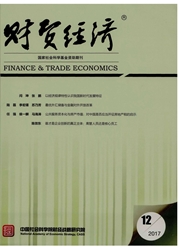

 中文摘要:
中文摘要:
不良贷款率的持续攀升考验了银行内部评级的有效性。本文利用Credit Portfolio View模型对2008—2013年间贷款迁徙率面板数据的实证研究结果表明,在银行风险偏好既定条件下,正常、关注和可疑类贷款迁徙率显著受到贷款增长率、法定存款准备金率和贷款期限等因素的影响,但次级类贷款迁徙率没有受到显著影响。国有银行与股份制银行贷款迁徙的影响因素存在一定差畀。对此,银行应继续完善内部评级体系,强化信贷投放政策的一致性,改善信贷资金来源结构,恰当设计贷款期限,有效遏制贷款迁徙。
 英文摘要:
英文摘要:
Continuous increase on nonperforming loan ratio keeps criticizing the effectiveness of banks' internal rating system(IRS). Using China listed banks' credit migration panel data from 2008 to 2013, this paper studies the determinants to credit migration by Credit Portfolio View model. Empirical results show that, given banks' risk preference, bank credit quality migration including normal class, concerned class and suspicious class is influenced not only by loan incremental rate and legal reserve requirement rate, but also by loan maturity. Secondary class has not been influenced by those determinants. There exist different determinants between stated-own banks and joint-stock banks. And banks should improve internal rating system, strengthen credit policy consistency, improve financing resource structure and set appropriate maturity to curb credit migration.
 同期刊论文项目
同期刊论文项目
 同项目期刊论文
同项目期刊论文
 期刊信息
期刊信息
